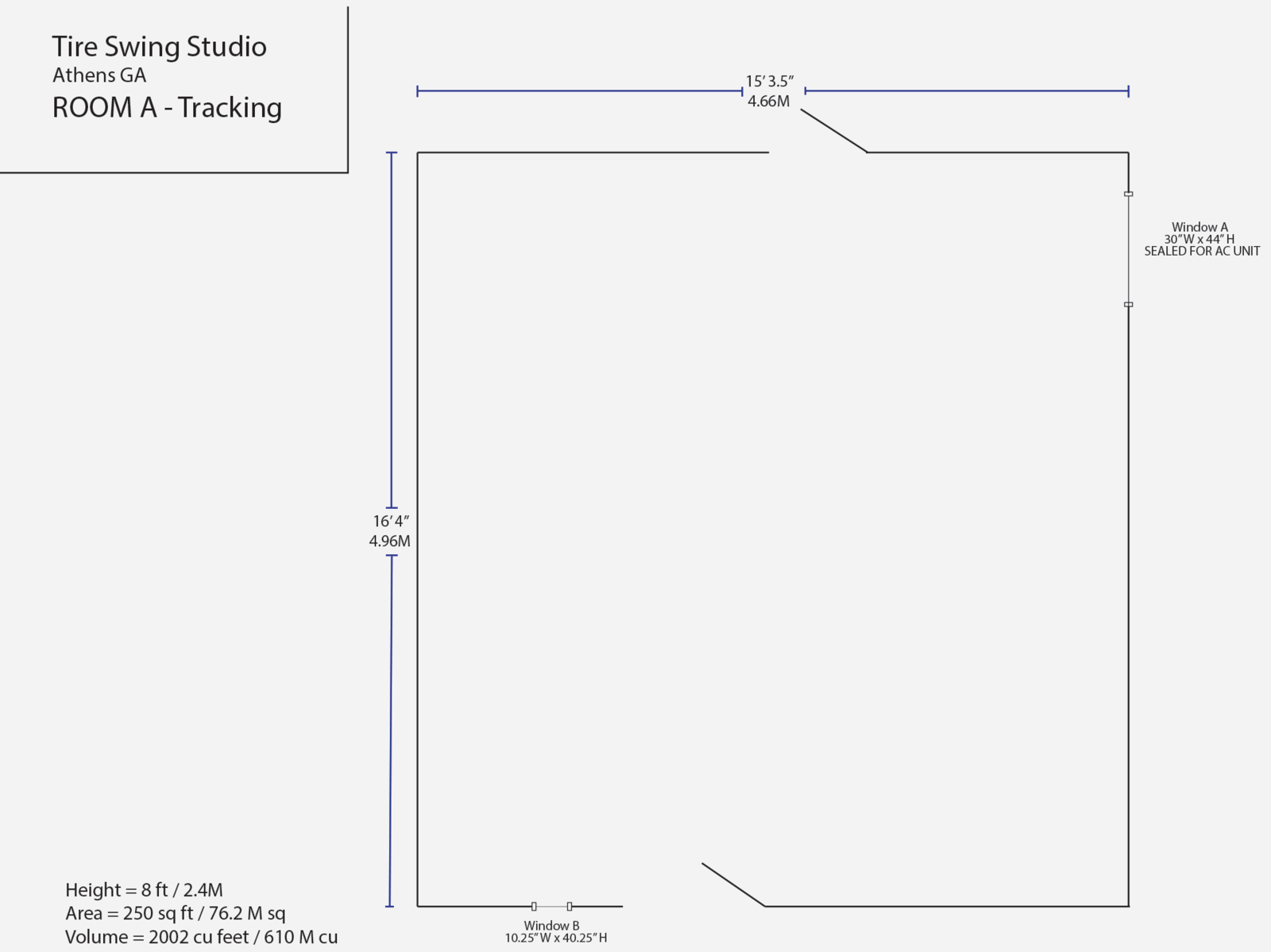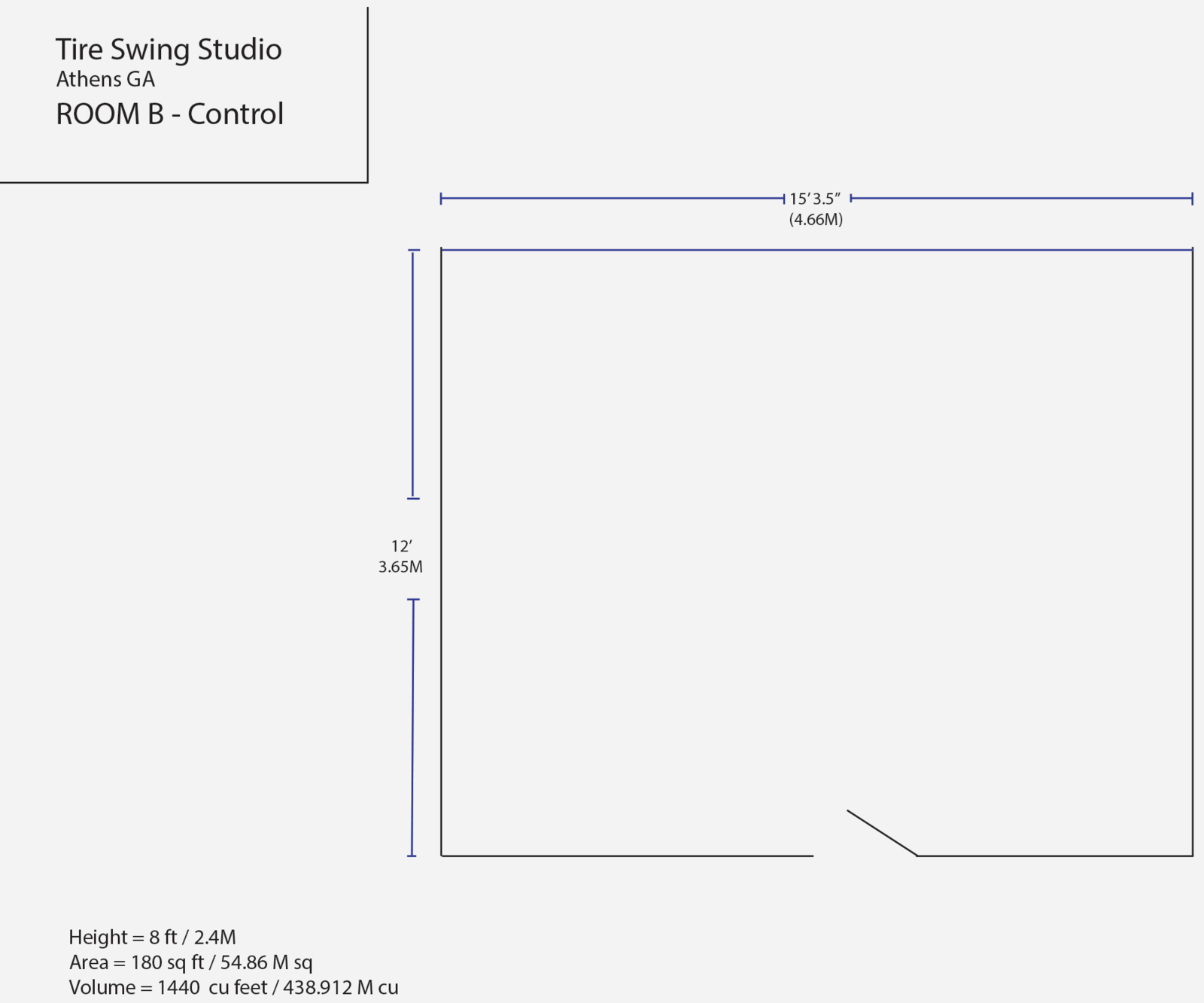Hi All! Thanks for being here, thanks for having me and thanks for taking a look at this.
I'm working on starting a music education project here in Athens GA and I'm building out a studio for it.
(you can find more details at https://www.thrilla… )
First off I need to say that isolation is not a problem here. Not that there aren't issues, but I can get around them and my neighbors are super cool. Plus the building itself is set way off the road on the end of a dead end street.
I've posted diagrams of the two rooms involved, but for now I'm focusing on the control room (Room B in the diagrams).
I've also posted the SPL results from REW for the room - it's an average of three tests. I'm new to REW and room acoustics, so I'm spending a lot of time in YouTube learning how to read the results. But if any more experienced folks want to give me some tips on how to make the room more neutral and appropriate for mixing/mastering/control that would be greatly appreciated!
You can also download the mdat file for the tests here: https:///www.thrillahill.com… (you might have to right-click and select "save as" to get that to work).
I'm sure I left a lot of stuff out of this but please feel free to unload with any questions you might have!
Thanks again,
Will.





Ok the clears some things up. The sharp drop off in the low end
Ok the clears some things up.
The sharp drop off in the low end i am attributing to the alesis elevates.
The big concern is the 30db jump between 70-100hz. This is a critical range, and 30db is gonna leave things too uneven to be fun to mix on.
Heres my thoughts.
Speakers:
I would try putting the speakers very close to the wall. This positioning can help reduce cancellations, and can boost sub frequencies due to being close to the room corners.
This what id do first. Together with your current set of measurements, the new set will outline the range of available response. Then you can find the best compromise.
Treatment:
You need much more bass trapping than is in the room. In addition to making the face of the traps larger, i would stuff the cavity behind with uncompressed insulation.
Then i would add bass traps along the wall ceiling junction.
The ceiling cloud should extend from behind the speakers to behind the listening position.
If its possible to space the wall panels furher off the wall this will help flatten bass.
Once the trapping, cloud, and speaker location is optimized, if the bass is still varying alot, it would be time to add tuned panel traps, and/or transform your bass traps to resonators by adding wood slats.
If its not too late id still consider making the studio a single room studio since you will get much better mixes and easier tracking.
If the entire 20x30 was available you could have nearly world class level room response without a ton of effort.